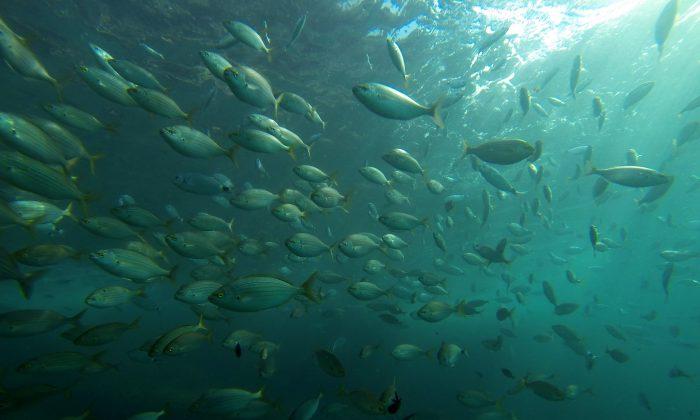After announcing that some eel-based products imported from mainland China contain malachite green, the Hong Kong Health Department has released further test results showing that eight types of freshwater fish imported from China also contain malachite green, including grass carp, mandarin carp, milk fish, snakehead fish and California perch, while those fish of these types collected in Hong Kong were free from this carcinogenic compound. On August 22, the South Korean government has halted the sale of all freshwater fish imported from China. The government is testing batches at random. If malachite green is discovered in any type of freshwater fish, all fish of that type will be returned to China.
Hong Kong’s Food & Environmental Hygiene Department confirmed that 11 out of 14 kinds of eel-based products from eight grocery stores were containing malachite green, and all of these products came from China. The Department immediately confiscated and destroyed the 11 products. On August 20, Hong Kong’s media prominently featured the news that 80 percent of eel products contained malachite green, and severely criticized the hygiene measures taken by the Hong Kong government.
Hong Kong Shoppers Lose Confidence in Food from China
The number of people to buy fish in Hong Kong has greatly reduced since the carcinogenic agent was discovered in the freshwater fish from China. Hong Kong fishers and retailers express that because consumers have no way to distinguish whether freshwater fish in markets come from the local region or mainland China, they have urged the government to take measures to ensure the safety of the freshwater fish products. Otherwise, they may launch shopkeepers’ strikes. Due to a series of incidents of imported foods from China such as pork infected by Streptococcus suis, tainted fish and pesticide-heavy vegetables, people in Hong Kong have lost their confidence in the food coming from China. One resident told the BBC that she had no confidence in food coming from China, and she would rather purchase food coming from Australia even though it had a higher price. A retired teacher said that until Hong Kong’s government confirmed the safety of the fish products from China, he wouldn’t buy any more fish for the sake of the health of his children, because the food from China often had some problems. He also added that “they” [the HK government] often covers up the facts. When the media reports such incidents, it means it has already become quite serious.”Twelve People in Hong Kong Infected by Streptococcus Suis
The China’s General Administration of Quality notified the Hong Kong government that the pig streptococcus epidemic disease in Sichuan and Henan provinces was under control, and there had been no new cases of infection found for the past few days. Hong Kong’s government announced that on August 24 pork imports from Henan province, Sichuan province and Shenzhen city would resume.Unsafe Eel Breeding Process in Mainland China
According to the Hong Kong Apple Daily, the tainted eel incident severally frightened Hong Kong shoppers. Mr. Lin, a Hong Kong fisherman, wrote to the Hong Kong Commercial Broadcasting Co. and reported that he had seen horrible eel-breeding procedures in mainland China. Mr. Lin said that the mainland eel-breeding farms use more than ten drugs, such as flavomycin and chloramphenicol, to feed Japanese eels. “The drugs were applied just yesterday, and the eels were packaged for sale today. These drugs inside the eels have not yet been absorbed”, said Lin. He added that the capture procedures by fishmongers were even more horrible: “Since it is hard to catch eels, which burrow into the mud, fishmongers use potassium permanganate to poison the eels. This way, the eels would lie quietly so that they could easily be caught.”In addition, Mr. Liang, who works in the leather industry, also revealed a terrible story about using leather waste products as feed for fish, chicken and pig farms in China. He said that the leather production process uses many chemicals, and a large amount of leftover bits and pieces of material would be cut and discarded. “In mainland China, some people only collect these waste materials and grind them to powder, then mix them with millet and salt powders and sell them as feed materials.” One such factory he knew of was the Hong Kong Fur and Leather Factory in Northeastern China, Mr. Liang said.





Friends Read Free